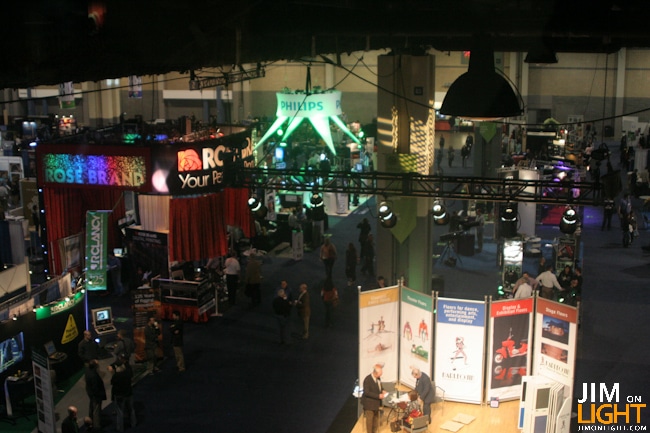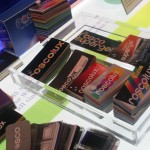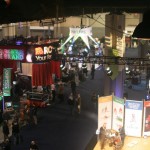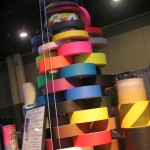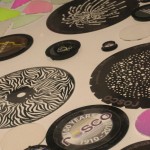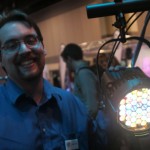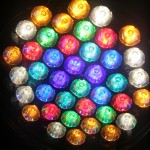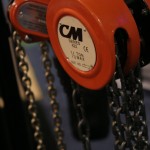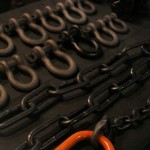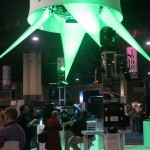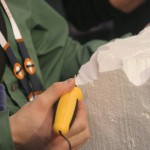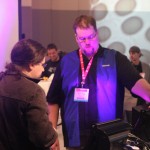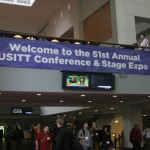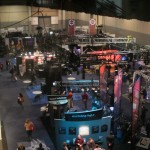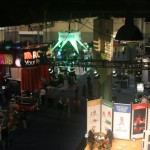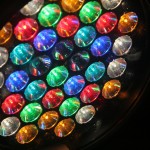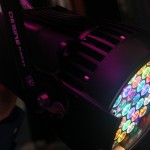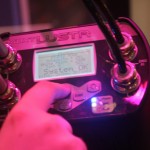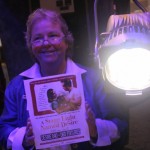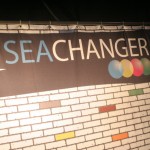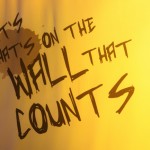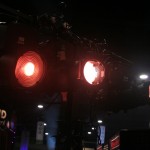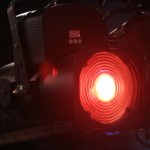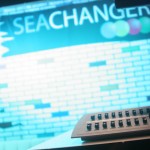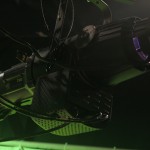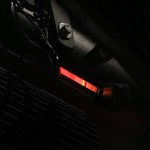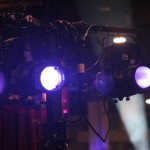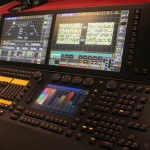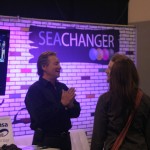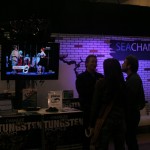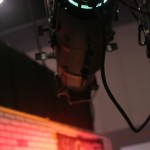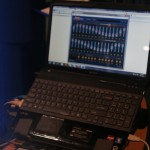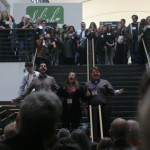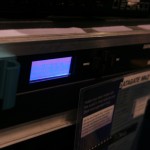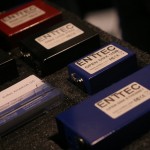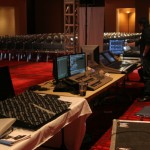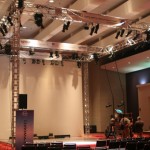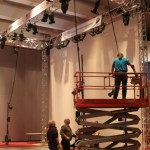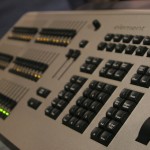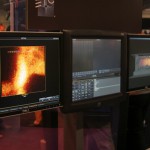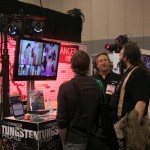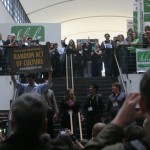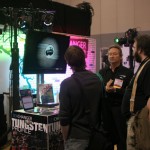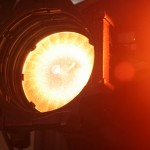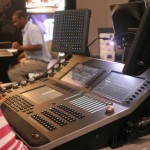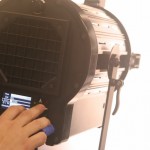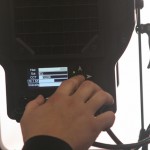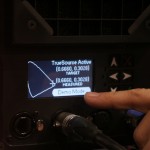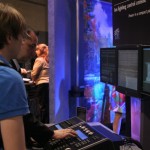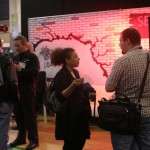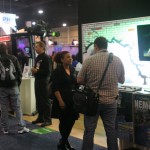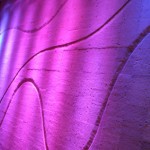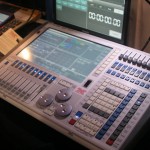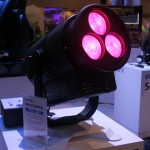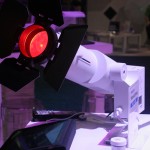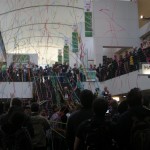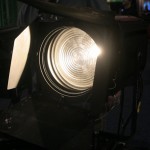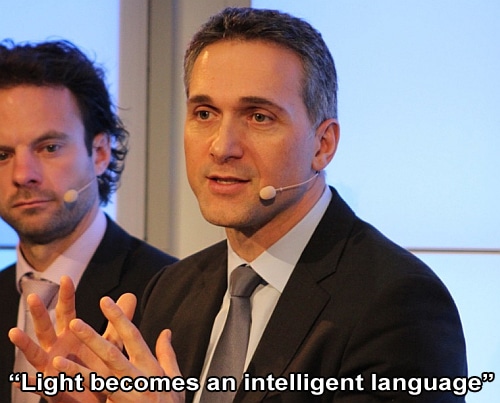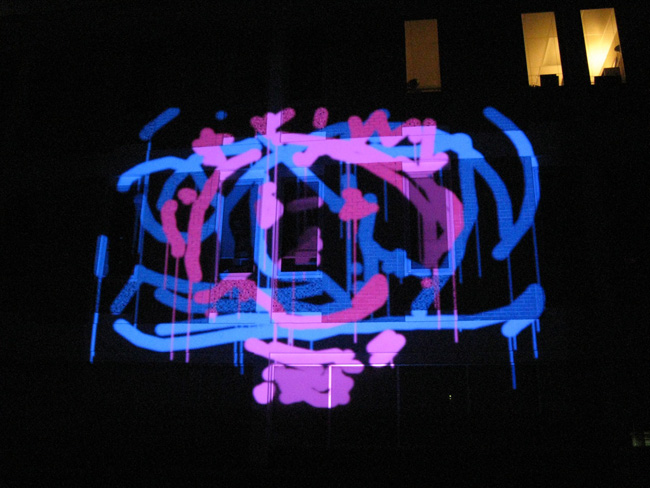
I am proud to have a smart young guy like Aron Altmark on the JimOnLight.com Team – Aron is a lighting designer/programmer in the Vegas area, and if you’ve been around to LDI or USITT in the last few years, you’ve met Aron. We very affectionately refer to him as the Hebrew Hammer, because, well, Aron’s awesome.
I’m bummed I was unable to get Jax out to the USITT show this year, but you can count on seeing her at LDI in Orlando in all of her beautiful tattooed glory! I was only able to be at the conference this year to give my session, and let me just say that I am bummed on all I missed by having to leave early! This is our lives though, and we all know and do it.
I want you to give a big ol’ JimOnLight.com Community welcome to Aron – and his awesome USITT Wrap-up!
Aron?
Good day all of you out in the creating and entertainment world!
Some of you may know me from past JimOnLight appearances, such as Laser Graffiti and the random tweetup run-ins Jim and I tend to have. I just got back to Las Vegas–my home base for the past year–from a fantastic, fun, and enlightening conference known as USITT (the United States Institute of Theatre Technology, for those of you who don’t already know). I was there walking the floor, attending sessions, and talking to everyone I could for a solid four days in the lovely Deep South city of Charlotte, North Carolina. Here’s what you missed if you weren’t able to go, and if you were there here’s what you may not remember after the nighttime festivities…
USITT is first and foremost geared toward students. Even though most of my time in Vegas has been taken up by working nightclubs and programming, I am still in school part-time at both UNLV in Las Vegas and another school online, so I can definitely appreciate things from a student’s perspective. At the closing ceremony, it was reported that over 4,000 people attended the conference, not including exhibitors. I’d be willing to bet that at least half to two-thirds of these were students, judging by the amount of young faces on the floor. This conference’s biggest advantages, in my opinion: how close and hands-on students from all over the country can get to industry-leading technologies,, the wealth of learning opportunities through sessions, and the ridiculous amount of networking possible.
Students everywhere, if you don’t already practice it, get on this networking train. It’s THE MOST VALUABLE skill to have in our industry now, as touted by every single industry pro I’ve come in contact with at LDI and USITT in the past few years. Facebook, Twitter, LinkedIn are all such valuable tools to use, especially in such a technologically saturated world. Case in point: while interviewing an exhibitor about a product, Richard Cadena walked up to me and said hello. He remembered me from last few conferences, and perhaps from our brief exchanges on Facebook–if you don’t know who Richard Cadena is, GOOGLE NOW. The connections you form at these things can be kept going for years, and it may only take so much as a tweet every now and then. You never know where it’ll get you.
As far as sessions go, I have been somewhat less than satisfied with those offered at past USITT and LDI shows, as they seem to be rather hit-or-miss with which are amazing and which aren’t worth the time. Many presenters, from what I’ve been told by other attendees, weren’t prepared well enough and based their entire time on Q&A. Some sessions are purely life stories, which can be nice, but I am a big proponent of teaching practical trade skills at conferences. After a few sessions in a row of life stories, I tend to be begging to learn a console or a new method of using color. Don’t get me wrong–learning from the successes and mistakes of those before me is a fantastic thing, and I do love it. It’s just that I think that at a conference where students have access to more technology at one time than most universities will be able to afford in four years of budget, shouldn’t students get some hands-on time with the expensive toys?
Speaking of expensive toys, here’s a brief run-down of some of my favorite–some new, some updated–products found on the show floor at USITT:
Desire LED by Electronic Theatre Controls:
This brand-new fixture from ETC is the next iteration of their extremely-popular Selador LED fixtures. It is a wash-light that uses the Selador’s X7 color system to provide beautiful color palettes hard to attain with standard RGB LED fixtures. I spoke with Novella, the creator of the Desire, who told me that it sports three different models–the D40 and D40 XT (outdoor), as well as the D60, the bigger and brighter version. You can order your Desire in six different styles: Vivid for amazing color rendering, Lustr for more theatrical punch, Fire/Ice for extremely hot reds and cool blues, and three Studio models for TV/Film applications. The Desire sports a 30-40% increase in brightness over Selador, dimming curves to match incandescent or other LEDs, adjustable output frequency, and they use a whopping 125W per fixture AT FULL. Also, get this: the Desire has an Amber Drift function built in, so your colors will stay consistent with those of your tungsten fixtures. Definitely on my wish list.
Reveal LED Studio Fresnel by Prism Projection:
LEDs are all the rage now, especially with the green revolution we’re undergoing all over the world (and which I’m a huge supporter of). Prism Projection won awards for their LED Profile (that can use construction paper gobos) at LDI 2010 in Las Vegas, and are following it up with this beautiful Film and TV-aimed LED Fresnel. The good people over at Prism hand-picked their LEDs for wattage and color to create the best color rendering possible. The LED Studio Fresnel spits out 7600 lumens with a tunable CCT of 2700-8000K, 20-70 degree zoom, silky smooth 0-100% dimming, and features plus/minus green/magenta for calibrating to other craptastic light sources. It sips power at 180W on full white, and has a hi-amperage DC connector on the side that allows you to run the light off of existing camera (or 9-Volt) batteries. One user ran it for two hours using a belt pack battery.
PL1 & PL3 LED by Philips:
Last LED I’ll feature, I promise. These amazing fixtures use the light engines from the industry-changing VLX LED moving light that Vari*Lite released a few years back. The PL3, aimed at replacing a 1.2kW Fresnel, uses three VLX light engines, while the PL1 uses only one. The PL1 is aimed at museums and galleries, with pre-programmed color and color temperature presets. The RGBW source is beautiful in its color rendering, and the addition of white into the LED engine makes it possible to use very saturated colors while still maintaining the integrity of the artwork on display. The coolest thing I found about this fixture was that museums are attempting to discover what time of day, month, and year paintings were done so that they can use these fixtures to replicate the EXACT light the painter had when creating it. Essentially, you could one day soon see the Mona Lisa as Da Vinci did.
DMX Goodies by Enttec:
Enttec probably had one of my favorite booths this year. I spent a good hour each day playing with DMX toys and talking with Jeremy, Enttec’s sales rep for the show. Enttec is making the world of lighting control really affordable, with their DMX to USB and DMX to Ethernet interfaces. These run from a “You’ve got to be kidding me, that doesn’t even pay for parts” $60 DMXÃ USB dongle to the “Okay, seriously, does Fleenor know you’re doing this?” $90 4-Port DMX Opto-Splitter. These things are great quality and priced JUST RIGHT FOR STUDENTS. HINT HINT. Just think, you could spend under 100 bucks, download Chamsys’ MagicQ console software, buy a $50 dongle, and you have a lighting console on your PC. Just like that. Jeremy was also showing me their new DMXIS software, which is a really nice piece of software that is aimed at being a very simple but powerful lighting laptop-based lighting controller. It’s loaded with features, and I can almost promise you’ll see more about it from me very soon. Enttec also has a new DataGate, which is an 8-port DMX opto-iso that supports RDM, Art-Net, and uses a web browser interface…which means you can use its wealth of features from ANYWHERE IN THE WORLD. Again, I’m sure you’ll see more on this from me soon. Enttec is a great company to get to know, they’re in it to win it.
Green Hippo Hippotizer by TMB:
My friend Loren from TMB was showing me the highlight reel they had running at the show, and includes some ridiculous gigs. You may have seen the Academy Awards recently, which used a total of 53 Green Hippo Hippotizers. That’s right, that’s over 74 HD outputs. The cool thing about TMB’s media server platform is how flexible it is. The UberPan system they have now allows for easy manipulation of content across multiple displays, while VideoMapper allows for crazy mapping onto LED screens, as seen in last year’s Super Bowl Halftime Show with The Who’s performance.
Pandora’s Box by Coolux, Ltd:
While we’re on the media server soap box, I went by the Coolux booth to take a look at their powerhouse media platform, and it has some stupid neat stuff going on as well. The coolest thing about Pandora’s Box, in my opinion, is the Widget Designer feature. As someone who is on the verge of lighting, video, and interactive applications, I’m always looking for more ways to incorporate external inputs and sources into media. The Widget Designer has 700-800 widgets currently available, and being a node-based platform makes it easy to incorporate many widgets into a project. Pandora’s Box does amazing projection mapping as well via the Warper, which allows for 10,000 individual nodes (points) per video output to map to. This allows you to set up a projector and do live warping to you subject. See their website for some ridiculous highlight reels.
Avolites Titan OS:
Alright, you knew I couldn’t stay away from consoles for long. I’m a programmer. Give me a break. I haven’t been a big Avo fan for a while, but I saw their new consoles getting some great press and decided to take a look at the new Titan OS lineup…I was extremely impressed. They were showing off a prototype Sapphire Touch, a large console with 45 motorized faders and two internal touchscreens meant to rival the grandMA2 Light. It wasn’t quite up to functioning yet, but it did have some pretty face-panel features such as tri-color LEDs under the trackball and encoders to help you determine what attributes you’re currently affecting, as well as color changing to match CMY and RGB fixtures. They also implemented a “Saturn’s Ring” encoder around the trackball which I really loved the feel of for zoom/iris. The Tiger Touch, already in production, was extremely impressive. It is a very capable, well-made compact console with a whole lot of power. The large internal touchscreen allows for drawing of legends so you can label your fixtures, groups, and presets as you would like instead of being restricted to typing names. The Titan Mobile, a four-DMX port, ultra-portable version of the Tiger Touch, is perfect for on-the-go shows. It is powered off of a laptop and can support up to 12 universes via Art-Net. All of the Titan OS consoles can freely exchange show information, and all feature ITC Thumbnail exchange for media servers. I’m going to get my hands on one of these pronto.
V476 by PRG:
This is another prototype console on the show floor, but this one is run on something a bit unheard of in the past few years of console development: Mac OS X. This was a VERY nicely laid-out, well-constructed console. It seems to have been thought about from the programmers’ standpoint, which I definitely appreciate. The console uses a left-hand bias for the keypad, which I was a bit unsure of at first, but I’ve gotten used to stranger things before. For user friendliness and ease of programming, this seems like a good busking console. I’m looking forward to some hands-on time with the Vegas shop.
grandMA2 v2.2 by MA Lighting:
The grandMA2 is a phenomenal console (not that I’m biased…I run two of them in Vegas) with enough capabilities for the most gargantuan of shows–up to 256 universes of DMX and 10,000 possible sequences, presets, and groups. The version 2.2 software came out recently and sports some awesome new features that cater the theatre world specifically, making A.C.T’s USITT appearance a nice treat. There are two blind modes: one that allows for blind edits of cues currently playing, and another that gives you a completely blind programmer for quick programming of looks, groups, and more without live output. Partial show read has been implemented, as well as import/export, allowing you to use sequences, presets, groups, and patch from various shows selectively. RDM and Art-Net in have been implemented, and there is a nifty new iPhone/iPad remote that can speak to both grandMA series 1 and grandMA2 consoles. Layout views, a powerful tool for creating a custom user interface for your show, can take snapshots of your 3-D Stage View for ease of creation of many variations of layout views quickly. The two new features that are my favorite: the DMX Tester, which pops up when you open the DMX Sheet–allowing for live adjustment/testing of individual DMX addresses, as well as quick patching and troubleshooting; and the new Modes for sequences, which introduce two modes of Assert (like an Allfade) and Break (like a Block cue). The grandMA2 is quickly moving from a ridiculously overpowered live/busking console to one that can easily make its home in the house of traditional proscenium theatres.
Check out the photo spread from my USITT experience this year, and thanks for having me, everybody!

